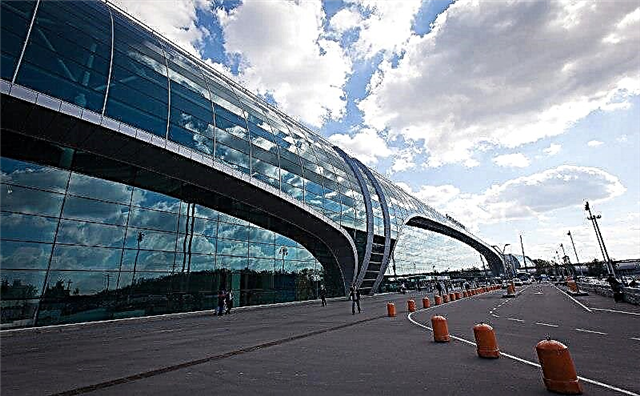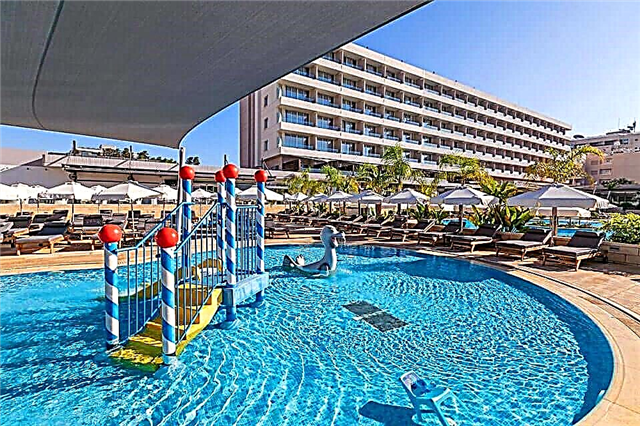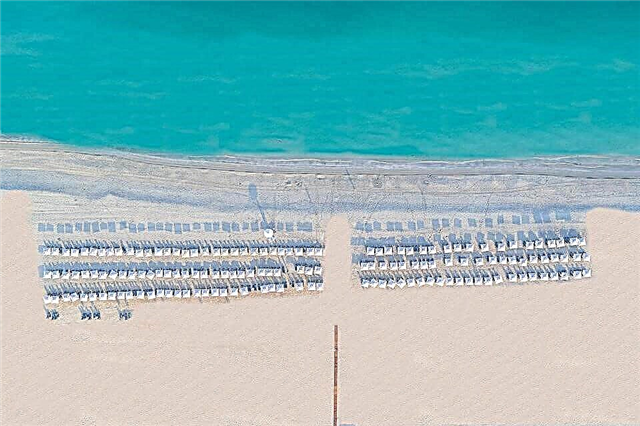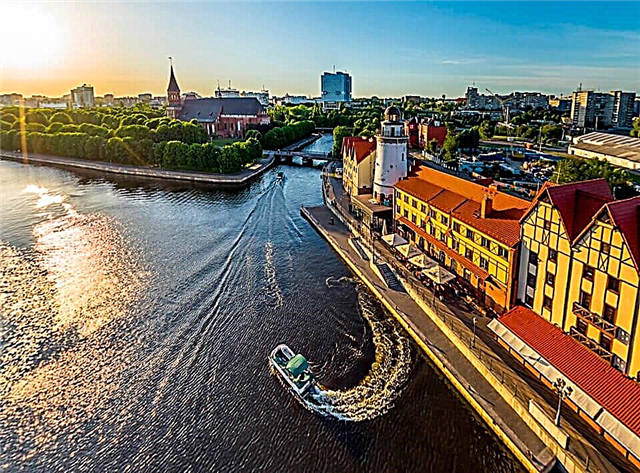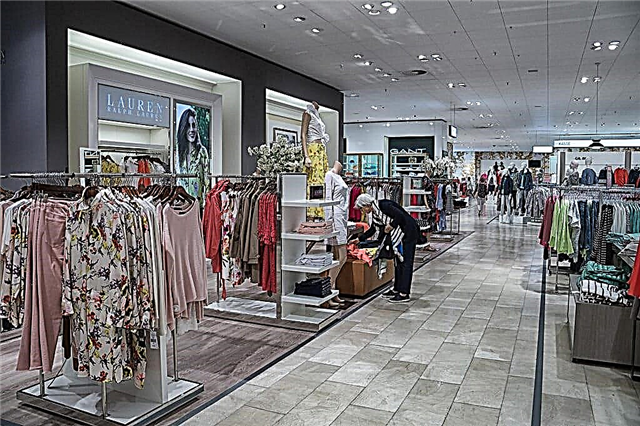Over the centuries, the history and destinies of Russia and Germany have been intertwined in an amazing way. A striking example of this is the Alexanderplatz in Berlin - the most extraordinary city square, named in honor of the Emperor of All Russia Alexander I. Here, in the eastern center of the capital of Germany, the monuments of the past, the faceless architecture of the GDR and modern buildings merged together.
History
"Alex" (as the townspeople laconically call one of the most popular squares in the main German metropolis) dates back to the 13th century. At that time, this place was located outside of Berlin, protected by a fortress wall. Here, at the eastern Oderberg Gate, trade routes connected from the Hanseatic cities on the Baltic Sea.
And the cattle market and the place of executions

In 1272, a hospital for lepers and the adjoining chapel of St. George appeared on the territory of today's Alexanderplatz. In addition, the fortress wall hid the place of execution from the eyes of the inhabitants of the capital. Between 1391 and 1448, at least two public executions were carried out here a year. The Thirty Years' War reduced the population of Berlin, and many houses were burned and destroyed.
To improve the defense, Friedrich Wilhelm decides to build a new ring of the fortress. The area in front of the Oderberg Gate (now called the Georgentor) becomes part of the city. For a small fee, the Great Elector sells plots of land, and residential buildings and manufactories appear on the square. The livestock fair, which existed until 1681, is being converted into a Sunday market.
In 1701, the Georgentor was renamed Königstor (King's Gate), and the place in front of them - in Thor Platz (Torplatz). In 1800, about 700 families already lived in the area, whose members are artisans, retired soldiers, workers and merchants. The southern part of the square is used for parades, while in the north trade continues to grow.
Torplatz becomes Alexander Square
On October 25, 1805, the Russian Tsar Alexander I arrived in Berlin. The purpose of the monarch's visit was to obtain support from Prussia in the war with Napoleon. The solemn meeting of the heads of the two powers took place at Torplatz. As a result of the negotiations, an agreement was signed on joint actions within the framework of the anti-French coalition. In commemoration of the union, Frederick Wilhelm III issues a decree according to which Thorplatz receives the name of a high-ranking guest and is henceforth called Alexanderplatz.
Alexanderplatz in the 20th century and today

The beginning of the last century was a time of prosperity for the square. Large department stores, office buildings and excellent transport links have made Alexanderplatz an important part of the German capital. In 1936, about 35,000 vehicles crossed this place every day. The eastern center of the city met the end of World War II in ruins.
By 1958, the territory that became part of the GDR was cleared of the remains of destroyed structures and turned into a pedestrian zone. The global reconstruction began in 1966. After the completion of urban planning works, the area of Alexanderplatz was 80,000 m2. After the fall of the Berlin Wall, new residential and commercial buildings were erected on Alex. Tram lines reappeared. In the near future, according to the plans of the architect Hans Kolhoff, 11 skyscrapers will decorate the main square of East Berlin.
Sights
Today Alex is one of the busiest and most visited places in the German capital. Along with the train station, parking lots, office buildings, shopping centers and hotels, famous city attractions are located here.
World clock

The huge chronometer, designed by industrial designer Erich John, appeared in 1969. The full name of the ten-meter structure "Urania World Time" stems from the fact that during the demolition of the ruins of Alexanderplatz, workers discovered the Urania Column (a prototype of modern weather stations). This find formed the basis for the idea of an unusual clock system.
A wind rose mosaic laid on the asphalt has a column 2.70 m high and 1.50 m in diameter. A rotating cylinder is attached to it, which is a polygon with 24 faces. Each of them symbolizes the time zone of the planet. The names of cities and schematic outlines of countries are depicted on the aluminum plates. An abstract model of the solar system describes circles above the clock.
Fountain of friendship

In front of the Galeria Kaufhof department store, streams of the Friendship of Nations fountain, created in 1969, soar into the sky. Water entering the highest part of the copper structure flows down a cascade of 17 diamond-shaped bowls into a two-level pool. The iridescent spray is reflected in the glass crystals, which are lavishly adorned with the spiral structure. For the abundance of ceramics, enamel and multi-colored ornaments, the six-meter fountain received the nickname "Prostitute's Brooch".
Berlin TV Tower

The main observation deck of the capital is visible from anywhere in the city. The television tower (Berliner Fernsehturm) was inaugurated on October 3, 1969 - shortly before the celebration of the twentieth anniversary of the German Democratic Republic. In the eyes of the Chairman of the State Council Walter Ulbricht, the structure, built in four years, became the embodiment of the superiority of the socialist system.
The height of the reinforced concrete structure is 368 m. The middle steel part with a diameter of 32 m is made in the form of a ball. The rays of the sun hitting it create a pattern that resembles a cross. The inhabitants of East Berlin called this optical effect the pope's revenge on the atheistic GDR.
Today Berliner Fernsehturm is the architectural symbol of the German metropolis. At a height of 207 meters, there is a restaurant slowly revolving around its axis, and on the floor below there is a panoramic platform. Two high-speed elevators bring hundreds of tourists here every day. The ticket price is € 15.50. VIP entry (no waiting in line) will cost you 19.50 euros.
St. Mary's Church

Next to the TV tower is Berlin's oldest church, the Marienkirche. The date of the construction of the evangelical church is shrouded in the fogs of time. According to historical records, in 1294, the parish, built on a brick and cobblestone foundation, already existed. The building acquired a neo-Gothic appearance with elements of neoclassicism and baroque at the end of the 18th century thanks to Karl Gotthard Langhans, the architect of the Brandenburg Gate. The last reconstruction dates back to 1970.

The interior of the church is designed in the Gothic style. The most significant interior details are the splendid lectern by Andreas Schlüter (1702) and the organ behind which Johann Sebastian Bach performed the fugues. The main attraction of the tower hall is the partially preserved panel - the fresco "Dance of Death", which appeared after the plague epidemic that swept the city in 1484. The temple is open to the public from 10:00 to 16:00 (January to March) and from 10:00 to 18:00 (from April to December).
Red town hall

The three-storey red brick building, 100 m long, topped by an 84-meter clock tower and flagpole, is one of the popular attractions of the metropolis. The Neo-Renaissance building appeared on Alexanderplatz in 1861. As conceived by the architect Hermann Wesemann, the monumental building was supposed to personify the dignity of the inhabitants of the capital.
After reconstruction in 1958, the city council of East Berlin met in the Rotes Rathaus, and since 1991 - the mayor and senate of the united Berlin. From Monday to Friday, from 9:00 to 18:00, those who wish can visit the foyer, ceremonial, coat of arms and column halls.
Fountain "Neptune"

Between the Red City Hall and the Church of St. Mary, a magnificent neo-baroque architectural monument - the Neptune Fountain - gives coolness. The idea of its construction belonged to Friedrich Schinkel. However, the Prussian architect did not manage to carry out his project. The construction of the bronze structure was undertaken by the sculptor Reinhold Begas. The opening of the masterpiece took place on November 1, 1891.After World War II, the fountain was dismantled, and in 1969 it was installed in a new location.
Half-naked ladies are languidly sitting on the side of red granite, symbolizing the main rivers of Prussia: Elbe, Rhine, Vistula and Oder. A sink is installed on a three-tiered foundation. In its center stands the bearded king of the oceans, holding a massive trident in his left hand. The lord of the water element is surrounded by playing babies, crocodiles, crayfish, snakes, turtles and sea chimeras.
The shops

The territory of Alexanderplatz was chosen not only by tourists, but also by fans of shopping from all over the world. Here, both small shops and huge shopping centers coexist. Opposite the Urania Clock is Saturn, Germany's largest home appliance and electronics retailer. Near the station is one of the oldest department stores in the city - the Galeria Kaufhof, which first met customers at the beginning of the 20th century.
On an area of 35,000 m2, visitors can freely walk through the well-organized world of fashion, perfumery, cosmetics, jewelry, watches, household and sports goods. The renowned Galeria-Gourmet deli is located on the ground floor. Friendliness, customer orientation and comprehensive services are part of the concept of the trading house.

On Alexanderplatz you will also find Berlin's largest megamall, the Alexa Arcade Center. Behind the pink facade on four floors there are 180 shops offering clothes, shoes and accessories of democratic brands such as S. Oliver, Esprit, H&M, Comma, Gerry Weber, Gabor, Betty Barclay. Media Markt offers a huge selection of home and multimedia equipment. The upper level is occupied by fast food restaurants.
If you are convinced that exclusive brands are worth a fortune, then you are wrong. In the TK Maxx outlet you can buy a jacket from Karl Lagerfeld for 80 euros or shoes from Joop! for 60. On three floors, buyers will find men's, women's, children's clothing and footwear, sporting goods, cosmetics, perfumery, leather goods, glasses, household items and kitchen utensils. Prices for all goods have been reduced by 20-75%.
Where is it located and how to get there

The main square of the eastern part of Berlin is one of the central transport hubs of the city. The railway station of the same name is located here and the routes of regional trains, electric trains, metro, buses and trams are connected.
- S-Bahn. Trains S3, 5, 7, 9 to the station
- U-Bahn. Metro lines U2, 5, 8 to
- Buses TXL, 100, 200, M48 to the stop Alexanderplatz / Gontardstr., 248 - to Alexanderplatz / Grunerstr.
- Trams М2, 4, 5, 6 to the stop Alexanderplatz / Dircksenstr.
- Car: coordinates for the navigator 52 ° 31 ′ 18.905 ″ N 13 ° 24 ′ 47.574 ″ E. Three underground parking lots are located within walking distance from the square:
- garage at Alexanderstraße 1 with 655 spaces. The cost is 2 € per hour. For visitors of the Galeria Kaufhof department store who have made purchases over € 20, the first hour of parking is free (subject to presentation of the packing slip at the checkout).
- garage RathausPassagen on Grunerstraße 5. Price: first hour - 1 €, from 2 hours - 1.5 €.
- parking for the Alexa shopping center with 1,600 spaces. For the first hour you will pay 1 €, then 1.5 €.
And of course, you can get to Alexanderplatz by an alternative taxi - a cycle rickshaw. The driver of an exotic vehicle will take you to Alex with a breeze, along the way will tell you about the sights and introduce you to interesting and useful life stories.


